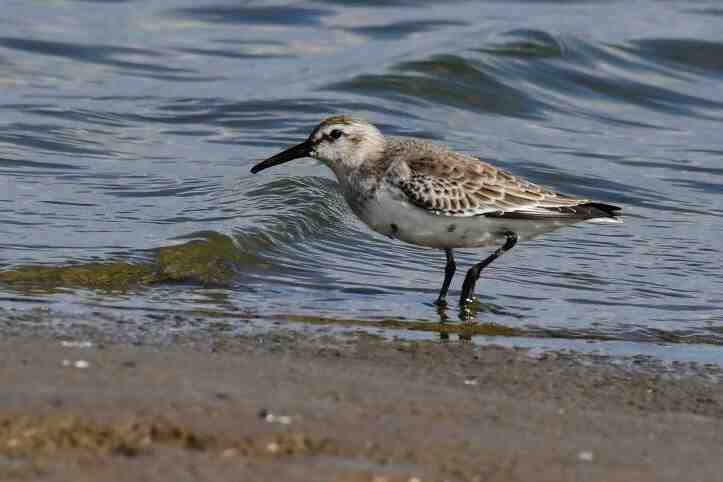Limicola falcinellus
IUCN
LCBasic Information
Scientific classification
- name:Limicola falcinellus
- Scientific Name:Limicola falcinellus,Broad-billed Sandpiper
- Outline:Wading birds
- Family:Charadriformes S.family Platyrostris
Vital signs
- length:16-18cm
- Weight:38-50g
- lifetime:7-10 years or so
Feature
The wing Angle often has a distinct black patch with double brow lines
Distribution and Habitat
It is distributed in Afghanistan, Albania, Algeria, Armenia, Australia, Austria, Azerbaijan, Bahrain, Bangladesh, Belarus, Brunei Darussalam, Bulgaria, Cambodia, China, Cyprus, Czech Republic, Denmark, Djibouti, Egypt, Eritrea, Estonia, Finland, France, Georgia, Germany, Greece, Hong Kong, Hungary, India, Indonesia, Iran (Islamic Republic of), Iraq, Israel, Italy, Japan, Jordan, Kazakhstan, Democratic People's Republic of Korea, Kenya, Republic of Korea, Kuwait, Kyrgyzstan, Latvia, Lebanon, Libya, Lithuania, Malaysia, Mongolia, Montenegro, Myanmar, Namibia, Norway, Oman, Pakistan, Palestine, Papua New Guinea, Philippines, Poland, Qatar, Romania, Saudi Arabia, Serbia, Singapore, Slovakia, South Sudan, Sri Lanka, Sudan, Sweden, Tajikistan, United Republic of Tanzania, Thailand, Timor-Leste, Tunisia, Turkey, Turkmenistan, Ukraine, United Arab Emirates Uzbekistan, Vietnam, Yemen, Zimbabwe.
Passing Bird: Belgium, Cameroon, Chad, Croatia, Faroe Islands, Iceland, Ireland, Malawi, Mali
Appearance
The head of the sandsnipe is black brown in summer, and the eyes have two white eyebrows, the upper one is thinner, the lower one is thicker, the two meet in front of the eyes, and extend to the base of the mouth first along the eyes. The perforated line is dark brown, but the perforated line behind the eye is not obvious. The back, shoulder, and tertiary feathers are black-brown, with a white and pale maroon margin and a broad off-white tip. The white fringes of the shoulders and shoulders form a V-shaped spot on the back. The upper wing coverts are brown, the minor coverts and primary feathers are black, and the middle 锼 feathers are white. The feathers are black. The primary and larger coverts have narrow white tips that form narrow white wing bands on the wings. Waist and tail cover on both sides white, black brown in the middle. The central tail feathers are dark brown, while the rest are light gray. The cheeks and throat are pale brownish-white, with slight brown streaks. The res
Details
The Broad-billed Sandpiper has two subspecies.

The broad-billed snipe is mainly a traveller bird in China, and some are winter migrants. Autumn moves through China in September-October and spring in April-May.
The snipe is found alone, in pairs, or in small groups. The non-breeding period also sometimes integrates large groups. He likes to live and forage in the soft mud of the tidal stream area. Foraging is often the head and neck far forward, the mouth is perpendicular to the ground, while slowly walking forward while pecking, but also often persistent mouth vertically inserted into the mud to detect foraging. In case of danger, they sometimes crouch to the ground and do not move until the danger is approaching before rushing out and flying away.
The broad-billed snipe feeds mainly on small invertebrates such as crustaceans, mollusks, worms, annelids, insects and insect larvae. Occasionally, they also eat plant foods such as the seeds of the polygonaceae family.
The broad-billed snipe breeds mainly in tundra and near tundra forest waters. Breeding season June - July. Male birds often make courtship flights during breeding. Flying fast and slow, up and down, singing while flying. Sometimes they live in trees or stand on the ground, and the call is short, like "tirr-tirr-tirr". They usually nest on tundra meadows or on mounds in swampy meadows not far from water. The nest is mostly placed in the short grass or in the reeds in the ground pit, the nest is covered with birch leaves, willow leaves and moss. Each clutch lays 4 eggs. The eggs are pale brown or yellowish-gray in color, surrounded by small reddish brown spots. Especially the blunt end is denser. The egg is pear-shaped and 29-35×21-25 mm in size. Male and female birds incubate their eggs in turn.
On August 21, 2022, Peng Jing and Wu Shiwu, members of Wuhan Bird Watching Association, observed and photographed Calidris falcinellus near Wuhu Lake in Huangpi District.
It was included in the List of Land Wild Animals under State Protection that are beneficial or have important economic and scientific research value (Item 172) issued by the State Forestry Administration of China on August 1, 2000.
Listed on the International Union for Conservation of Nature Red List of Threatened Species (IUCN) in 2013 ver 3.1 - Not Threatened (LC).
Listed in China's "National Key Protected Wildlife List" (February 5, 2021) Level 2.
Protect wild animals and eliminate wild meat.
Maintaining ecological balance is everyone's responsibility!








